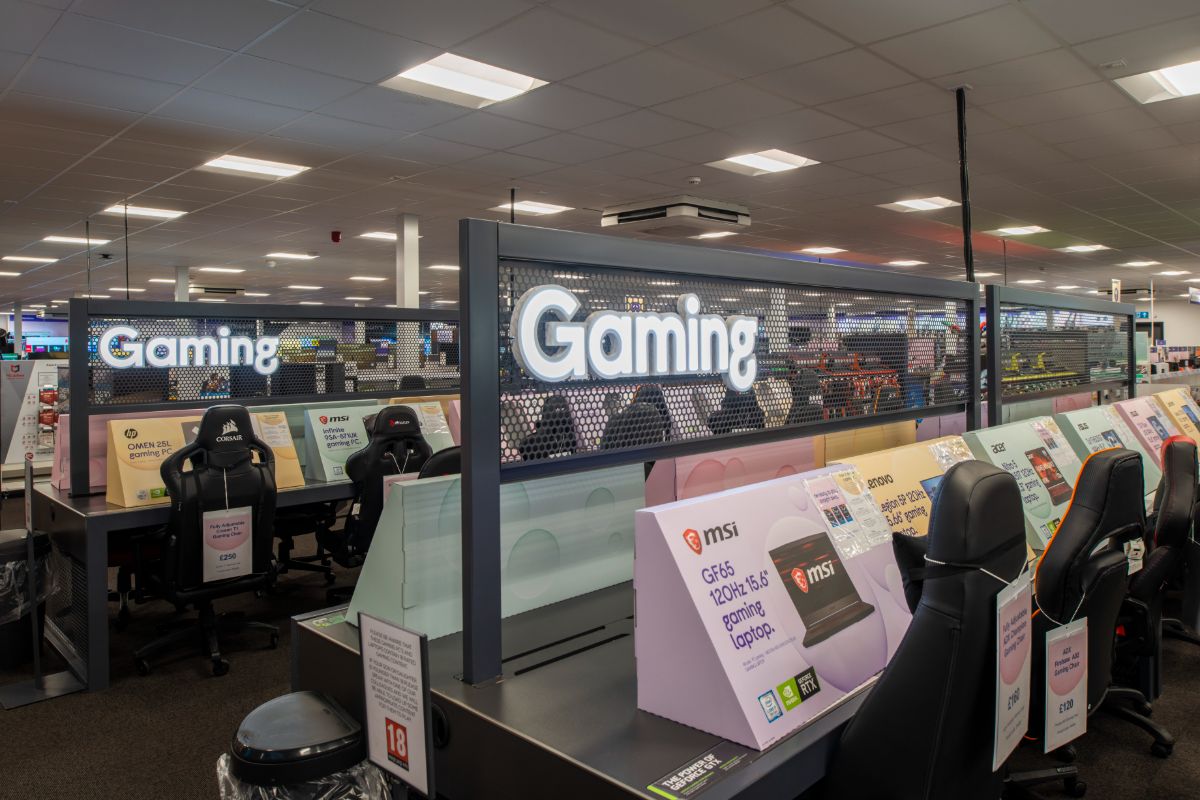New Look is on the verge of replatforming to enable growth of its online business from a predominantly UK womenswear retailer into a multichannel, global business. Jack Smith, Digital Director, and Sally Heath, Ecommerce Director, explain the strategy further.
New Look is the second largest womenswear retailer by sales in the UK, ranking only behind Marks & Spencer in this metric. It sells through bricks and mortar stores and its own online sites as well as via third party sites including ASOS and Zalando and a wholesale business.
Its brand presence amongst ‘youthful’ female shoppers is strong in the UK. Online sales account for 30% of the total UK business with customers able to collect their online orders in store next day or have them delivered, even of an evening or on a Sunday. In fact 31% of online orders are collected in store.The company is now looking to build on that multichannel UK womenswear success, expanding into international markets and other categories. The question for New Look though is how does it change from being a predominantly UK womenswear business into being what it wants to become, a global multichannel concern?
INTERNATIONAL, MENSWEAR AMBITIONS
Initial focus is being put on the international markets of China and Europe, particularly France and Germany, where the company will be building on existing growth. It already sells to 130 countries through a mixture of its own online sites and store estates as well as through partners; its 29 partners sell in 19 countries including the Middle East, Australia and South-East Asia.
The retailer has also grown a presence in China from a standing start to 80 stores in just 18 months and also operates an online store on Tmall. Jack Smith [irdx ijsm], Digital Director, New Look, explains that launching into a country with physical stores first made opening an online store fairly straightforward since the distribution centre was already operational in the country meaning that stock simply had to be ringfenced for the online channel.
“Fundamental” to New Look’s growth ambitions is menswear, a category which currently accounts for just 5% of its business. As well as the expansion of the menswear business, the product ranges are being broadened to include fragrances for men and male grooming products. Smith explains that the company is opening five standalone menswear shops in the UK as part of the bigger focus that is being placed on this category.
A foray into homewares in the form of candles also started at Christmas 2015 and this is one category which the retailer plans to extend. Sportswear, in the form of technical and every day wear, is another category which “has done really well for us,” says Ecommerce Director, Sally Heath [Irdx islh].
SMALL STEPS
Firstly though, the company needs to improve the experience for its international customers. It currently operates two sites, one being an English-language Euro site, while the other is the UK site which trades in GBP.
Translated versions of the Euro site were launched in France and Germany in July 2014 instantly eliminating the language barriers for customers in those countries who previously bought via New Look’s Euro site. Marketing in those two countries was also ramped up accordingly, explains Heath. “It was the single thing to move us forward in international,” says Heath since the company was then talking to people in their own language. New Look is achieving “triple digit growth” on the French and German sites and this growth has not been at the expense of a drop off in sales on the Euro site, since this has seen significant growth too, she explains.
At the same time, the company invested in the delivery proposition for customers in Europe, offering an express delivery option which reduced delivery times from 5-7 days to 2-4 days.
The international sites are currently traded from the UK, with an international buying team which has been building up a picture of which styles work in different countries and how to shape ranges for each market. For a womenswear business, predominantly focussed on the UK, there has been a lot of change for the trading teams and a lot to learn, not just about international markets but about categories – such as menswear – as well, explains Heath.
From a day-to-day perspective, some learnings can be taken from the UK, she explains, and areas such as segmentation, frequency and time of day can be taken to the individual markets and tested. “Those we’ll adapt over time,” she says. Obviously the trading calendar is different so that has to be taken into account too. Ultimately though, she expects that in-country teams will be set up as each market matures.
For the moment though, the French and German sites are essentially translated versions of the English-language site and “significant effort is required to change homepages,” says Heath. She explains the difficulty of trading separate countries in which different products are selling well without the flexibility to be able to make substantial changes.
Also of issue for New Look is that the platform and organisational structure are putting constraints on the growth plans. Another issue from a global view is that the look and feel of the sites don’t fit with the brand positioning. “They are reasonably feminine looking and don’t deliver a great prominence to menswear”, says Smith “so we’ve kicked off a transformation programme which is focused on three things,” he explains:
- Creating a multi-device, multi-country experience that works for men and women. The customer experience is to be redesigned to give a newer, cleaner online experience that works across mobile, tablet and desktop and in different countries. Currently, New Look has no mobile solution for any of its European markets outside of the UK, for example;
- The second part is moving the operational element to be more focused on individual markets. A balance will need to be made between centralising repeatable activities with trading activities to be focused on each country;
- Replace the technology that enables the above two points so that the company can trade effectively in each country.
MIGRATION
New Look is therefore migrating to the hybris multichannel platform removing conflict across platforms and enabling it to optimise trading in individual countries. Over the next 12 months, the different sites will be migrated onto hybris and traded in conjunction with the existing platform. Initially, the French and German sites will switch to hybris with soft launch in around six months’ time explains Smith; the UK business will follow around six months later once the European sites have been set up and optimised. “There’ll be user testing and A/B testing on the old and new platform to eliminate risk,” says Smith.
Separate merchandising systems and Oracle upgrades are also part of the plans as New Look readies itself for its international push, which will enable it to launch new, localised country-specific sites and deliver the right customer experience.
In parallel, improvements will be made to the delivery options for international customers, giving them more of the multichannel service enjoyed by customers in the UK. Smith expects it to take 12 months for the new platform to be rolled out, removing barriers for international customers – and internal teams – and 18 months for the full delivery options to be rolled out internationally.
Multichannel is another pillar of its growth strategy as it rolls out services pioneered in the UK into other markets as they become relevant to the customer experience. As well as its own multichannel growth, New Look will also focus on expansion through third parties and its partnerships. China is another key part of the strategy; New Look plans to open “lots of new stores over the next few years” in China and is looking to expand onto other platforms including JD.com . “Tmall has helped us learn how customers behave, how we need to operate in that market and the kind of skills and the team we need,” says Smith and the new hybris platform will enable the company to launch its own transactional site in China. For now, it’s about understanding the market and the product range so that it can achieve success when launched.
The entire project includes customer, operation and technology change and these are all being phased in, so although it seems like New Look is embarking on quite a transformational journey with rapid change for the business it’s “being steady about it,” says Smith.
He explains that they are taking learning from selling through third party ecommerce sites and extending out globally. “We’re laser-focussed on the customer so know what they want in each market,” he says. That translates for New Look as fashionability, speed and being localised.
NEW LOOK IN THE UK
New Look’s strategy in the UK is as a multichannel business, of which ecommerce is a part. Heath explains that she’s proud of the teams which delivered an online year-on-year growth rate of more than 30% in 2015, far exceeding the IMRG growth rate figures for UK ecommerce of 11% for last year. Of those online sales, 10% of orders are made in store and that number is expected to grow as the roll out of tablets across the store estate continues.
Heath does concede that “it gets tougher each year,” but continual improvements are making the difference. The teams work incredibly well together, she explains and “we do everything a little bit better each time. If the aim was to just to keep growing in the UK we have the tools to do that but the business has loftier ambitions,” she says.
Mobile commerce is one area in which growth is exceeding New Look’s expectations. It planned for 81% growth in 2015 but mobile increased by more than 95% over the year; 70% of traffic is now from mobile devices with smartphones and tablets accounting for nearly 60% of online revenue. “Mobile plays a part in every customer journey whether that’s online or in store as it’s a research tool,” says Heath.
Six months ago, New look set up a multichannel steering group comprising CEO Anders Kristiansen, and the heads of operations, creative and its key markets, as well as Smith and Heath. The steering group is designed to ensure the business remains focused on delivering its multichannel proposition and working out its five-year plan.
One person cannot own a multichannel strategy for the whole business as there are so many stakeholders and different factors involved in it
Part of the challenge though over the coming years will be how it engages with customers through whichever channel they choose to use. As customers interact with New Look through lots of different touchpoints so it takes many people within the business to respond, engage and serve them. “One person cannot own a multichannel strategy for the whole business as there are so many stakeholders and different factors involved in it,” says Heath so “we bring a number of people together to help make the decisions with all inputting and owning the vision for the future.”
KNOWING THE CUSTOMER
One aspect of the vision is learning more about customers. E-receipts have been introduced and are currently being rolled out across the entire store estate in the UK giving the company a way in which it can capture data from customers and link information about their purchases in store with their online profiles. “E-receipts are a cheaper way to collect data than a loyalty scheme,” says Heath.
Since New Look segments and markets to customers based on their profitability, having an extended view across channels will give them a better understanding of their customers’ in store behaviour and the ability to join up those customers’ journeys. It will also help with converting customers to multichannel purchasers and help with the design of apps for different customer segments.
Personalisation and audience-based targeting is where the growth is in digital marketing, explains Heath and New Look will be taking a softly softly approach, experimenting to see what works for its customers. The site will be personalised in terms of highlighting menswear to men or serving categories such as petite or plus sizes since these categories of womenswear are over indexed in the UK and in international markets.
“We’ll deliver what the customer wants, gradually and we’ll go on a journey with them,” says Smith.
“There’s a lot of power in this and targeting on an individual level is key but customers don’t want it to be obvious,” says Heath, explaining how the company sees a 20% increase in open rates on personalised emails. “A segment of one is where we’re trying to get to,” says Smith. “It’s hard and we’ll take time to get there and use the right technology,” he adds.
With the hybris platform in place to ease international trading New Look will have the ability to focus on and optimise its target countries and expand its customer base through the menswear proposition. With these firm footings put down in international markets it will then be able to innovate further.
Ultimately, it’s “all about brilliant basics,” says Smith. Our job is to tell someone we have something they might like and then for that customer to be wearing it, he explains. “We have to remove everything in the middle”.
New Look knows where its future lies in terms of changing from its roots in UK womenswear to becoming a global multichannel retailer for men and women. The foundations being put in place now will enable that growth to happen and Heath and Smith expect the company to be almost unrecognisable in 18 months time.
It’s an ambitious plan but by continuing to fix the small things, making things better every day and keeping its laser-focus on the customer, New Look is confident it will continue to drive double digit growth online in the UK while transforming its international markets.
CHRISTMAS TRADING
Christmas 2015 was another Christmas peak that’s “re-written the rule books,” says Heath. People were buying from the website right the way up to Christmas without a drop off in sales in mid-December showing that shoppers have confidence in the company’s ability to deliver. New Look then had a “phenomenal week” in stores starting on Boxing Day. As other retailers have seen, shoppers returning to the stores after Christmas highlights the need for multichannel choice and the necessity for retailers to remain flexible and adapt in order to give shoppers a seamless omnichannel experience.
He believes that one of the aims for the retail industry for Christmas 2016 will be to ease out the Black Friday peak into a longer time period, giving shoppers access to great deals but without the degradation of service you get from a spike.




